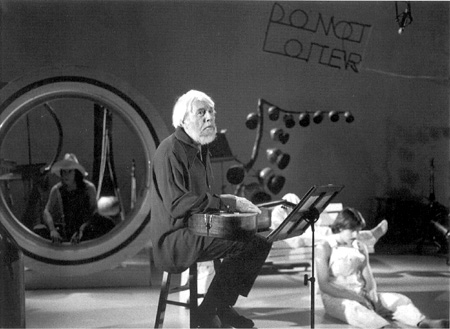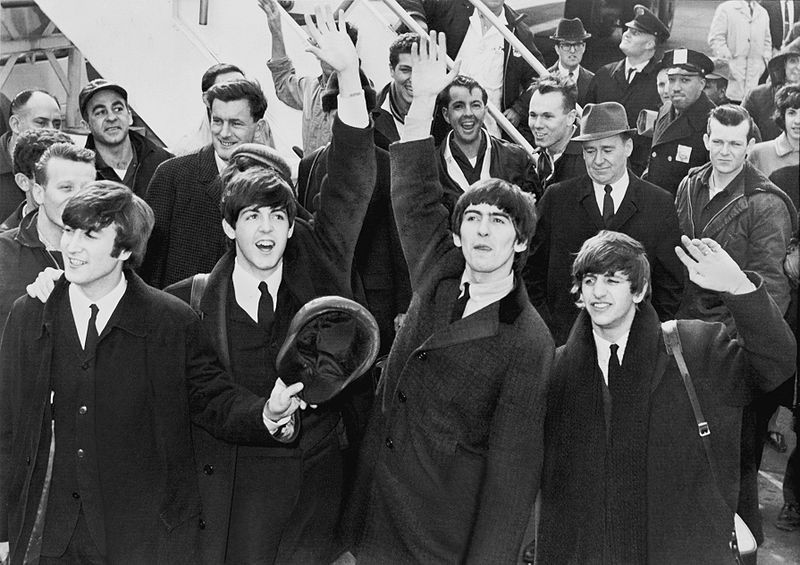Dewey 21C: March 2009 Archives

I mean, this is kindergarten. A five year old being drilled for hours on end. My first thought was that I would NEVER allow my daughter to attend that school, and I was pretty damn sure that the charter operator's kids went to private schools.
Well, here comes a new report from the Alliance for Childhood: Crisis in Kindergarten: Why Children Need to Play in School.
The report looks at kindergarten classes in New York City and Los Angeles and finds that students spend 2-3 hours per day in literacy and math instruction and testing; of that 20-30 minutes per day is spent on standardized test preparation. Less than 30 minutes per day and often zero time is spent on play or choice time (which is where the arts would take place).
Click here to view the eight page summary.
Is this really new, some of you might ask? Well, the issue has been rapidly gaining attention, but the question of long-term effects of such drill and kill at early primary grades hasn't been tied to together before in such a nice and neat bow.
Now, what was it again they were chanting at the Republican National Convention? Drill Baby Drill?

 A few weeks ago I wrote about a new report from the Government Accounting Office (GAO) concerning the effects of NCLB on arts instruction (see narrowing of curriculum).
A few weeks ago I wrote about a new report from the Government Accounting Office (GAO) concerning the effects of NCLB on arts instruction (see narrowing of curriculum). Not a great deal of attention has been paid to this study, beyond a piece in the Dallas Morning News and two recent blogs: Eduwonk, and Education Week. Additionally, Michael Sikes of the Arts Education Partnership published an analysis of the report.
I have intended to come back to the study, as all I really did in my blog was to announce it. The piece in the Dallas Morning News pressed the issue.
The more I looked at this study, the more uneasy I felt.
I had spent some time with the researchers and like them very much. It's important to realize that even though they're the Government Accounting Office, as impressive as that may sound, the title doesn't necessarily give them access to information that districts, state departments of education, and USDOE do not want to share with them. In addition, the parameters they were allowed to research were extremely narrow.
So, the report took a look at two academic years of data, 2004-2005 and 2006-2007, and drew the conclusion that NCLB had caused little to no reduction in arts instruction for the roughly 93% of elementary school teachers surveyed nationwide. It found that seven percent of schools surveyed reduced instruction in the arts and that the most significant declines were in schools that were failing to meet AYP (Adequate Yearly Progress) under NCLB measurement on standardized tests in reading and math, as well those with the highest percentages of minority students.
So, you might argue that it's very good news for those who support NCLB, with some very bad news if you have an interest in equity (which is what NCLB is supposed to be about anyway).
Good and bad, it is big news, and disputes the widely discussed report by the Center for Education Policy on NCLB and the narrowing of the curriculum.
So, why am I uneasy?
Here are a few questions/comments:
How could a study of two academic years made after NCLB was implemented and without an established baseline prior to NCLB's implementation tell us very much?
The survey questions are never provided, which makes it difficult to understand the relationship between conclusions and questions posed to teachers, as well as surveys and interviews with district officials.
The study indicates that the arts are provided to elementary students at a rate of six percent of their instructional time on task. That's way under New York State requirements, as a one point of reference, and you have to wonder whether or not the survey could ascertain reductions much below six percent of time. How accurate can they get with such survey. But again, they don't provide the survey (or raw data).
The study gives the impression that it is surveying teachers, but at the same time getting some of this information from district officials, many of whom have little to no real data about instructional time at the elementary levels. On the whole, the best these officials can do is address what is offered, rather than actual instructional time on task.
What is more, and perhaps the kicker here, is that is that the GAO didn't actually survey the teachers. They used two existing surveys conducted by the USDOE and worked from summaries, as the raw data was not made available.
So, if you've been kind enough to read the whole blog, you're asking what this has to do with the telephone game. Well, along comes the Dallas Morning News with the headline: "GAO finds that School Arts Curriculum Not Hurt by Standardized Testing." And here's the opening paragraph:
"A government report found that elementary school time devoted to art and music curriculum hasn't changed despite the ongoing pressures of standardized testing in core subjects such as math and science."What the hell? See what I mean? NCLB has been great for the arts (or at least benign), let's throw a party? The telephone game goes like this: GAO report; Dallas Morning News; hey friend, did you know that NCLB has had no effect on time spent studying non-tested subject areas; hey friend, let's test even more; hey friend, the arts benefit from testing in other subjects.
It's a scary world when the media just prints a press release or report without any questions/research. It happened with WMDs. And here it is on display with what many will see as a pro-NCLB piece.
So, what is there to do about it?
 I was watching a bit of President Obama's press conference last night and a question was asked concerning families who are living in tents. This was fairly common in New York City and other urban areas, I presume, in the rough and tumble late 70's through mid 80's, but I hadn't heard mention of it yet as a present day issue. Today, The New York Times ran a front page story with lead photo about the tent cities emerging. It made me think of The Great Depression, the Hoovervilles, of John Steinbeck, Upton Sinclair, Walker Evans--the ways in which that time was chronicled and given voice by some of the greatest artists of the day.
I was watching a bit of President Obama's press conference last night and a question was asked concerning families who are living in tents. This was fairly common in New York City and other urban areas, I presume, in the rough and tumble late 70's through mid 80's, but I hadn't heard mention of it yet as a present day issue. Today, The New York Times ran a front page story with lead photo about the tent cities emerging. It made me think of The Great Depression, the Hoovervilles, of John Steinbeck, Upton Sinclair, Walker Evans--the ways in which that time was chronicled and given voice by some of the greatest artists of the day.Sadly, few know of Harry Partch. Partch was composer, theorist, inventor, historian, and without question was of the most important and innovative composers of that crazy innovative, American composer driven 20th Century.
Partch composed using a 43 tone scale. While he wasn't the first composer to use what are called "microtones," he certainly is one of the most important. He also created his own set of instruments to play in this musical system. And, when I use the term system, I don't use it lightly as Partch developed an extremely well thought through system of just intonation that will give a headache to anyone math-challenged or music theory challenged.
So, you may ask, does this make him someone I should know?
Uh-huh.
Let's look at one of Partch's works, that places him in the context of great artists who illuminated life during the Great Depression.
US High Ball is one section of The Wayward, available on recordings in versions led by Partch himself (CRI Records) and The Kronos Quartet (Nonesuch) in a splendid arrangement by Partch colleague and wonderful composer, Ben Johnston. The Wayward is based upon Partch's riding the rails, hobo-style. Yup, he was a hobo for a time. You can read about it in any number of books, or even watch the Preston Sturgis film Sullivan's Travels, or Emperor of the North, or Boxcar Bertha among others, should you need a refresher on the term hobo.
If you want to hear it, hear the voices, real words and lyrics and feel it through the musical genius of Harry Partch, check out US High Ball, and then give a listen to the entire The Wayward.
I have always thought that Partch's work would make the most wonderful curriculum for study by K-12 students. Wanna talk integration of the arts across the curriculum? Head straight for Harry Partch and you will find music, history, science, math, social studies, and more. This is integration of the arts across the curriculum, the curriculum of life. It's one of those projects I hope to get to someday...
And, the way things are shaping up with our and the world's economy, US High Ball may be closer than we think.
Partch documentary on Youtube.

Using a quasi-experimental research model, the study chose two schools in the same geographic area, with similar demographics, and all the students were part of the same ELA program (Balanced Literacy). Students in the treatment school studied piano for three straight years; those in the control group had no musical training whatsoever.
The students were assessed at the beginning of the study and again at end of the school year.
The research showed that the students who studied piano had significantly better vocabulary and verbal sequencing than did the students in the control group. The researchers posit that this is evidence to support the approach of "educators incorporating a variety of approaches, including music, in their teaching practice...to improve reading achievement in children."
The authors see a link between music and language: "because neural response to music is a widely distributed system within the brain.... it would not be unreasonable to expect that some processing networks for music and language behaviors, namely reading, located in both hemispheres of the brain would overlap."
There are some other interesting tidbits concerning the baseline data raising questions of whether or not certain skills from music decline over the summer when students may not be studying piano. It's not an unusual issue in education: teachers often speak about certain skills and knowledge fading during summer vacation.
Of course, questions will be raised about the duration of the study, size of the study groups, etc. Some will circulate it as the silver bullet; others will take the piece to task.
Interestingly enough, the piece was forwarded to me by the staff of a key elected official in New York City, with the note: "...more research always helps."
The fact that I got this piece from the office of an government official before someone in the arts education field gives me more hope than the study itself...

"For years, with school budgets declining in so many American cities, museums have provided a parallel universe for learning. Now, with the Obama administration poised to support arts education with increased financing, museums nationwide are eager to align themselves with those efforts."
"Poised to support arts education with increased financing." Sounds great? Absolutely. Better than great.
That being said, I cannot figure out the basis for the assertion of
increased funding for arts education. Is it the increase to the NEA budget? The
stimulus package? Advanced information? Extrapolated from Obama's arts platform? Sure, the additional budget amount for the NEA (excluding the $50 million stimulus allocation) will see increased dollars for arts education, but it's not designated for arts education and in the grand scheme of things, it's not going to make that much of a dent. Plus, it's already been approved in the spending bill.
It's a terrific article, in terms of looking at certain aspects of museum education and outreach. But that first paragraph really jumps out at you and makes you wonder if it's going to build up false hopes. I would like to be positive about this and hope that there's something afoot in the administration near term (poised), that hasn't been indicated yet.
If you're wondering whether that increase is in the education portion of the stimulus bill, let's not get ahead of ourselves. For my next blog, I am going to do an update on that issue, but as a teaser, I can tell you that for the moment it appears that the arts would have to find a circuitous route into the $100 billion designated for education. Also, there are a couple of other bills to look at, including the GIVE Act, which is headed for passage, focusing on volunteerism and education. More to come on that too.

 Fair enough, the State of California is in a financial meltdown that predates the national economic decline, and yup, it's nothing new.
Fair enough, the State of California is in a financial meltdown that predates the national economic decline, and yup, it's nothing new.What's new is the extent of the troubled economy and the types of things that are on the chopping block. The state that made headlines for creating a $100 million plus categorical, per-capita fund for arts education; that's gone, basically, as the categorical restriction on the funding has been lifted allowing use for other purposes. Funding for arts organizations to work in schools through The Arts Community Partnership Network was suspended this past winter. And, well, many of you will recall the budget decimation of The California Arts Council, a number of years ago. (Something that appears to be happening in New Jersey right now...back on point!).
According to the Los Angeles Times, LAUSD will cut $10 million from funding for arts education, which is projected to include the elimination of the Arts Education Branch at LAUSD. An online petition to save the Arts Education Branch is accessible here.
Insiders report that there is indeed a plan to restructure LAUSD, which includes the elimination of the Arts Education Branch. This is among major cuts to teaching and administrative lines.
At the same time, The Wallace Foundation gave a planning grant of $600,000 to advance arts education in the district, and a separate grant for the county. Add to that, stimulus money flowing to the district and it will be an important bellwether to watch and learn from.
It's also interesting how little I've been able to find in the media and field about how this is all developing...
 Along comes Goals Gone Wild: The Systematic Side Effects of Over Prescribing Goal Setting, a new paper published in the the Harvard Business School's Working Knowledge that has the chutzpah to question the primacy of goal setting.
Along comes Goals Gone Wild: The Systematic Side Effects of Over Prescribing Goal Setting, a new paper published in the the Harvard Business School's Working Knowledge that has the chutzpah to question the primacy of goal setting. Besides having great taste in titles, the piece posits:
"For decades, goal setting has been promoted as a halcyon pill for improving employee motivation and performance in organizations. Advocates of goal setting argue that for goals to be successful, they should be specific and challenging, and countless studies find that specific, challenging goals motivate performance far better than "do your best" exhortations. The authors of this article, however, argue that it is often these same characteristics of goals that cause them to "go wild." Key concepts include:
- The harmful side effects of goal setting are far more serious and systematic than prior work has acknowledged.
- Goal setting harms organizations in systematic and predictable ways.
- The use of goal setting can degrade employee performance, shift focus away from important but non-specified goals, harm interpersonal relationships, corrode organizational culture, and motivate risky and unethical behaviors.
- In many situations, the damaging effects of goal setting outweigh its benefits.
- Managers should ask specific questions to ascertain whether the harmful effects of goal setting outweigh the potential benefits."

Essentially the San Diego School Unified School District, as it contemplates cuts to the budget, has decided to survey parents and others in the community to understand better what cuts to implement.
So, what does the survey tell us? First of all, it addresses what market researchers call the saliency issue. You have probably seen all sorts of polls, from Harris, to Lake Research, and others that indicate strong support for the arts. However, when you place the arts in a competitive arena, up against other subjects/issues, there has been a general belief that support for the arts dwindles.
This survey indicated that respondents are more supportive of cuts to other areas than for the arts (and physical education). Respondents would prefer moderate increases to class size (very interesting) instead of cutting band. Respondents would rather consider cuts to medical benefits and support services (professional development, etc.), than cutting visual and performing arts programs. Respondents would prefer to close schools with low enrollment, cut JROTC, and assign one principal to two small schools, rather than cut the arts.
So, how is this old school (backwards)? Well, you many notice that the survey only considers the subject areas of athletics and arts as possible subject areas to eliminate. There are no questions about any other subject areas, which in a way lumps the arts in with administrative overhead, landscaping, and general personnel issues.
What's odd about this is that in so many schools, particularly those that are on things like "watch lists" or identified as being in need of improvement, instruction in the arts is diminished along with foreign languages, social studies, science, and most everything except ELA and math.
All things considered, it's great to see a district ask a community what's important. Hopefully the district will act upon this information.
This reminds me of the Town Hall meeting I attended with the superintendent of the South Orange/Maplewood, New Jersey school district. The superintendent made it clear that he would not succumb to accountability measures that narrowed the curriculum. He recognized that parents in this community expect a rich arts curriculum and he was not about to back away from a well rounded education that includes the arts.
That meeting drew a red thread between expectations of active parent organizations and the level of arts instruction in a district or school.

All the aphorisms about Schuyler are true: the end of an era; he broke the mold; a true gentleman; lived a charmed life; and yes, I could go on.
 The career Schuyler had, well, I just don't think it could be possible today. In an era when people did not reinvent themselves and move from job to job, career to career as they do today, Schuyler was the doing it and doing it big time.
The career Schuyler had, well, I just don't think it could be possible today. In an era when people did not reinvent themselves and move from job to job, career to career as they do today, Schuyler was the doing it and doing it big time.Essentially, he started out as Jascha Heifetz's road manager. In a relatively brief amount time he headed up Artists and Repertoire at Columbia Records. He was right there at what was the beginning of the true golden age of recordings. Under Columbia, you had Ormandy, Bernstein, Szell, all making volumes and volumes of recordings. He was there with Horowitz, Stravinsky, Glenn Gould, and countless others.
From Columbia he went to Lincoln Center, as the first head of programming at the first performing arts center of its kind in the nation.
Much has been written about his time at the Metropolitan Opera and at the NYC Department of Cultural Affairs. But, it is his work with and for the many artists, and the many friendships and important relationships that he had that was the mark of this great man. His important friendship with Leonard Bernstein. His support for the career of Dimitri Mitropoulos. His friendship with the great music patron Francis Goelet. Schuyler's touch is clear throughout the philanthropy of Goelet. These are just a couple of examples from a list that is too great to count.
A number of years ago, I read a biography of Dimitri Mitropoulos, the great mid 20th Cenury conductor and music director of the New York Philharmonic. Studded throughout the book is Schuyler Chapin, who managed Mitropoulos at the time. It becomes abundantly clear that Schuyler was more than a manager: he was helping Mitropoulos navigate his way through his complicated career and personal life.
Schuyler was always there when you needed advice and always found a way to help. I once went to him for career advice after just starting at The American Music Center. Things were so very rocky at that time and I was very worried.
He told that he had a story for me that he thought would be helpful, which I remember very, very well: when he was at Columbia Records, he got a phone call from the agency of the Soviet government that managed (controlled) all the major Soviet artists. They had a live concert recording of Sviatoslav Richter they wanted to sell Columbia Records. Back then, because of the Cold War, Soviet artists didn't make it over to the United States very often and there was a scarcity of recordings. Richter, if you don't know, was one of the truly great pianists of the day, and of all-time.
Schuyler got the green light to buy the master tapes, for a significant sum of money. It was to be a great moment for Columbia Records and for Schuyler's career.
The records were pressed, plans were made, and then a letter arrived from Richter himself begging Schuyler Chapin to destroy the recording. The letter was, in essence, smuggled in by another artist so the Soviets would not be alerted. Richter wrote that he was embarrassed by the performance and the recording was sold without his permission. Richter appealed to Schuyler's honor to halt the project.
Schuyler then had to march himself into the office of Goddard Lieberson (father of composer Peter Lieberson), president of Columbia Records (also a composer by training) to tell him that the project had to be canceled, including the destruction of the recordings, and the writing off of the money paid to the Soviets. Schuyler offered to resign. This glorious story, as told to my by Schuyler, who happened to be one of the greatest raconteurs you could ever encounter, concluded with Lieberson telling him he would not accept his resignation, but to be sure never to let it happen again.
This early crucible in Schuyler Chapin's career tells you much about the man. He would not let the great Sviatoslav Richter down and was prepared to lose his job over it.
He had a charm and grace about him that was from another place and time. The ability to put people at ease and the good musical skills to hit the right note and tone as a board member, a leader, and as a friend.
What was overlooked in the obituaries was his great leadership and commitment to arts education. He gave of his time and capital to help create The Center for Arts Education while bringing along the next generation of civic leaders committed to this cause, such as Laurie Tisch. He dreamed a dream along with many others of a public school system in New York City that would provide the power, beauty, and wonder of arts education to all its students. Where New York would be the arts capital and the arts education capital of the world.
Yes, he will be missed.
It was a blunt hortatory and an interesting moment. A good question for all the participants, and indeed the field to consider.
Today, at the US Hispanic Chamber of Commerce, President Obama outlined his vision for education, and it's in the overhaul category.
Click here to read the transcript of prepared remarks.
Click here to read The New York Times coverage.
In summary here are the major points of his address:
- The Obama administration will make a major investment in early childhood education, including an additional $5 billion for Early Head Start and Head Start;
- A rethinking of standards to make them "tougher and clearer" and supportive of "21st Century skills like problem-solving and critical thinking, entrepreneurship and creativity." (for an interesting piece on 21st Century skills, click here to go to Education Week)
- An investment in the development of improved data systems, like "the one in Florida that keep track of a student's education from childhood through college."
- Incentive pay for teachers tied to student improved student achievement.
- Increasing the number of charter schools.
Where does arts education fit in? On the surface of it, you could argue that there's great opportunity for arts education in early childhood; that the underscoring of 21st century skills is a big opening, and that a better understanding of exactly what student achievement in the arts is and how it can be measured and connected to other areas and issues is vitally important. (See Jane Remer's recent post).
On the other hand...

Click here for Reuters.com story on Masters in Arts Degree in The Beatles.
One can only wonder if you have to take a class with Doctor Robert.
Can't you imagine yourself in a class discussing the folllowing:
For non state or local arts agencies, an organization may apply for $25,000 or $50,000, for the following purposes:
Projects are limited to:
- Salary support, full or partial, for one or more positions that are critical to an organization's artistic mission and that are in jeopardy or have been eliminated as a result of the current economic climate.
And/or
- Fees for previously engaged artists and/or contractual personnel to maintain or expand the period during which such persons would be engaged.
Jane Remer's Cliff Notes: What Can We Do to Make the Arts Count As Education?
All
research has flaws. Some flaws are so trivial that the research can still
stand as the definitive study. Other flaws prevent a study from being definitive,
but the study still provides useful guidance in the context of other
research. Some flaws are so serious that the research provides no useful
information at all. The tricky part is not finding flaws in the research
but in deciding to what extent the flaws erode the credibility of the
research. In general, the use of Randomized Clinical Trials can add substantial
credibility to a research study. ...Of course, nonrandomized
trials are an important complement to RCTs when the latter are
ethically inappropriate or logistically impossible...Failure to use randomization
or blinding, however, is not a fatal flaw. Furthermore, the
artificial nature of RCTs will often restrict their applicability to
overly simple interventions. When RCTs focus on narrow patient
groups or exclude important segments of the population, there may be
difficulty in generalizing their results. So it would be a mistake to label
the RCT as a gold standard for all research. A silver standard may be a
more appropriate label.
S.D. Simon,
Dept. of Medical Research, Children's Mercy Hospital, Kansas City, Mo.
For years when I worked with public
elementary and secondary schools and districts around the country, my first
question to the superintendent was whether the arts were on his or her and the
district supervisors' radar screens. The first question I asked the principals
was whether the arts were on their school report cards. Even in the most arts
friendly cities, towns and states, I generally got either a blank stare or an
evasive response. Even when a principal said, yes, of course, what I found on
the report cards had little if anything to do with teaching and learning the
arts as an academic discipline. Report card indicators for the arts included
attendance, acceptable behavior, and some kind of engagement in or contribution
to class discussion. There wasn't a national, state or local arts standard in
sight.
Perhaps there's grass roots hope, after
all, one parent at a time.
What do you think?
©Jane Remer 3/2/2009
*******************************************************************
 Jane Remer has worked nationally for over
forty years as an author, educator, researcher, foundation director and
consultant. She was an Associate Director of the John D. Rockefeller 3rd Fund's
Arts in Education Program and has taught at Teachers College,
Jane Remer has worked nationally for over
forty years as an author, educator, researcher, foundation director and
consultant. She was an Associate Director of the John D. Rockefeller 3rd Fund's
Arts in Education Program and has taught at Teachers College,  About a year ago, I had the pleasure of meeting with two staff members of the Goverment Accounting Office (GAO) and some of my own staff and board to discuss the the impact of the No Child Left Behind Act (NCLBA) on access to arts education.
About a year ago, I had the pleasure of meeting with two staff members of the Goverment Accounting Office (GAO) and some of my own staff and board to discuss the the impact of the No Child Left Behind Act (NCLBA) on access to arts education.The GAO has released a report: click here to read Access to Arts Education, February 2009, GAO 09-286
The highlights can be found by clicking here.
This report was conducted per the request of Congress, which asked the GAO:
1. has the amount of instruction time for arts education changed and, of so, have certain groups been more affected than others,
2. to what extent have state agencies' requirements and funding for arts education changed since NCLBA.
3. what are school officials in selected districts doing to provide arts education since NCLBA and what challenges do they face in doing so,
4. what is known about the effect of arts education in improving student outcomes?
GAO analyzed data from the U.S. Department of Education, surveyed 50 state arts officials, interviewed officials in eight school districts, and reviewed existing research.
The main conclusions:
1. Since NCLBA District and School Principals have used several strategies to provide arts education; however, some struggled with decreased budgets and competing demands on instruction time.
2.Officials report that when trade-offs involving funding or instruction time for arts education had to be made, the school principal made the decision.
3. Overall research on the association between arts education and student outcomes is inconclusive.
4. Schools in need of improvements as categorized under NCLBA, which include a higher percentage of low income and minority students were more likely to reduce instructional time in the arts.
There is a lot here and I haven't had the time to go through this. The GAO's focus here was fairly limited, as determined by the charge from congress. GAO is recommending that further study be done to examine more closely the reasons behind decreased instructional time when and where it has occurred.
Finally, for the moment, let's keep in mind that this report, for all intents and purposes, is based upon data before the current economic crises.
More to come...

